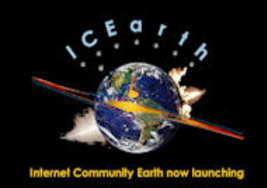
October 15, 2024
It’s an exciting time to work on lead poisoning. When we first came to the issue in 2021—just a few years ago—we were shocked by the paltry attention and resources lead poisoning received relative to its massive burden. At the time, you could fit most people working on the issue globally into a mid-sized conference room—and we know because we did.
But over the last few years the issue has steadily, and then rapidly, gained momentum. A growing global movement to stamp out lead poisoning led to the September 23 launch of the Partnership for a Lead-Free Future (PLF), a global public-private partnership with the goal of eliminating childhood lead exposure by 2040. The launch, on the sidelines of the UN General Assembly, featured panels with three heads of government, the leaders of almost all major international organizations, and First Lady Dr. Jill Biden.
The emphasis now pivots from basic awareness to concrete action. The PLF has so far secured US$150 million to tackle the issue, a terrific start toward our overall benchmark of US$350 million by 2030, which is the amount we think is needed to achieve its ambitious goal. Commitments thus far already represent 10x existing annual mitigation funding. But to make sure that this financial push achieves its objectives, it’s critical that we know how to spend it—and spend it well.
While lead exposure has attracted a good deal of scientific research, several fundamental questions around it remain only partially answered. These knowledge gaps, if not addressed, might obstruct our ability to make the most of the newly devoted funds and attention.
Broadly, we divide those outstanding questions into three buckets:
- Sources: Where is the lead coming from? Source assessment is an obvious priority to develop context-specific policy responses to lead exposure. CGD has produced a preliminary review of methods and priorities in source assessment in developing countries, which includes suggestions for specific questions under this umbrella, and potential research designs to address them. We are interested both in which sources are to blame for population-wide exposure, as well as the process by which they become sources. Market and lifecycle analysis of certain sources would therefore also be valued.
- Impacts: How much does lead contribute to cardiovascular disease risk, hurt children’s cognitive development, increase proclivities to violence, etc? There is a large literature on each of these topics, disproportionately concentrated in richer countries, and often lacking clear causal evidence. We’re particularly interested in proposals for new, desk-based analysis of natural experiments that provide credible causal estimates of the size of these harm parameters. Unlike other proposals, research on this question in high-income countries would be eligible.
- Solutions: What works to reduce lead exposure? We would welcome both desk-based analyses and new experimental or quasi-experimental fieldwork to evaluate credible lead mitigation and remediation interventions in low- and middle-income countries. We are agnostic as to specific policy options. As examples, proposals might evaluate lead paint bans, test new innovations to clean up the used lead-acid battery recycling market, or evaluate the replacement of leaded cookware and other household items, etc. Separately, there is promising evidence on the effectiveness of nutritional interventions—in particular, calcium and iron supplementation—in ameliorating lead exposure, but this evidence base is relatively weak. A randomized control trial of these interventions would therefore be highly valued.
The Opportunity: Research grants to better understand (and mitigate!) lead poisoning
To this end, we are issuing a Request for Proposals (RfP) for research that can help us better understand and mitigate the global burden of lead poisoning. With generous support from Open Philanthropy, we have a total of US$1 million to grant to research projects—large or small—which can help us answer the three big questions listed above, or otherwise meaningfully contribute to global mitigation. Initial expressions of interest are due December 16. Detailed information on the scope of eligible proposals, and how to apply, is provided in the RfP here.
We’re open to a wide range of research designs from across disciplines—economists, chemists, environmental scientists, doctors, public health professionals, supply chain experts, and more are all encouraged to apply! We’ll consider fieldwork and desk research alike, and everything from randomized control trials to natural experiments, market analyses, and environmental sampling. We’re also open to applicants from a range of backgrounds and organizational circumstances, and we particularly encourage researchers from the Global South to apply.
Have further questions? Feel free to reach out to us (contact details are in the RfP), and we’ll do our best to get you an answer. We’re also planning to host a brief explanatory webinar to walk through the RfP, as well as a separate virtual ‘matchmaking’ event, where researchers will have the opportunity to hear from implementers with programs to mitigate lead poisoning. You can register for either event by clicking the links above.
We look forward to seeing your ideas to open up the black box of global lead poisoning—and answering the key questions that international organizations, aid agencies, and national governments and communities need to create a lead-free future.
Disclaimer
CGD blog posts reflect the views of the authors, drawing on prior research and experience in their areas of expertise. CGD is a nonpartisan, independent organization and does not take institutional positions.
https://www.cgdev.org/blog/wanted-your-research-proposals-help-end-global-lead-poisoning

Comments